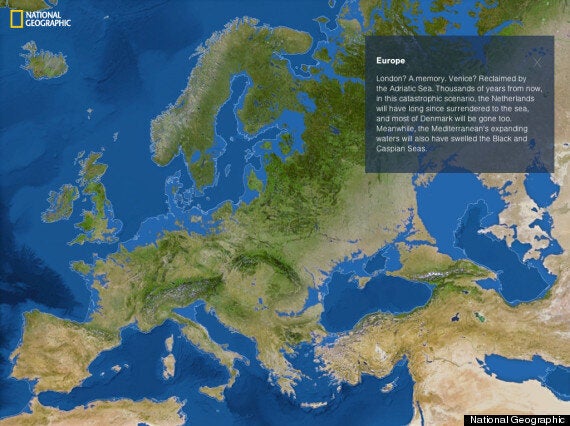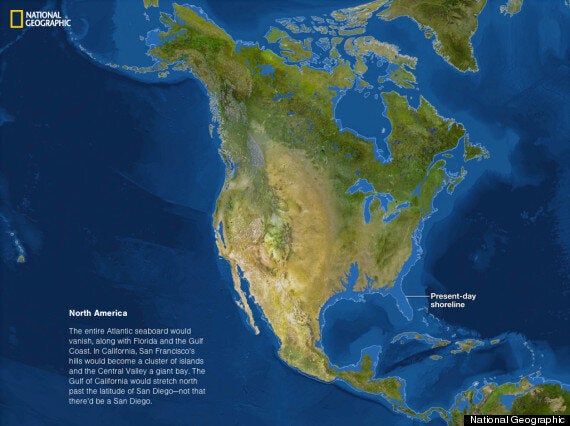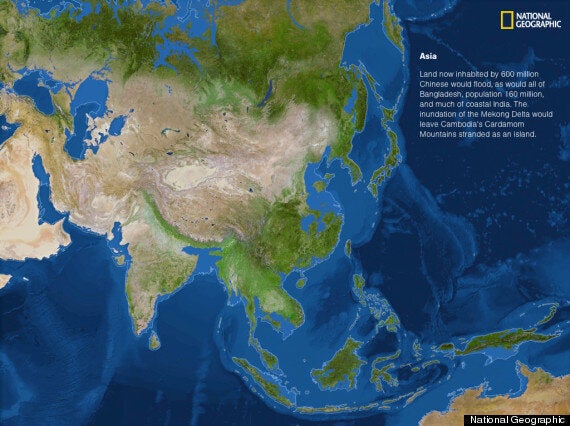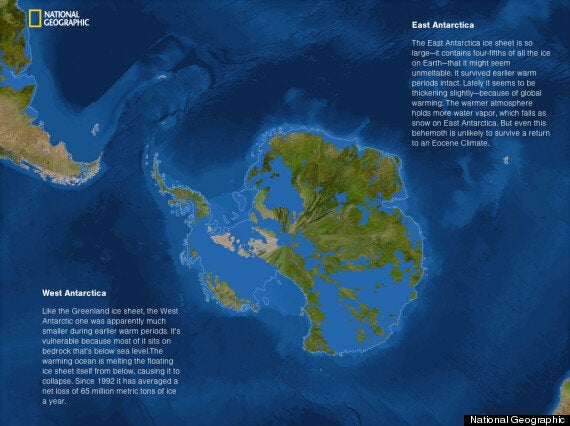As the world's waters swell with melting ice, London could be lost under the sea, along with most of the UK's costal towns, and European jewels like Amsterdam, Venice and Copenhagen.
The Norfolk coastline would be consumed by rising tides, which would swallow much of Kent and Sussex, beaches and towns like Margate and Brighton.
These striking images from National Geographic show the dramatic changing landscape if all the world's five million cubic miles of ice were to melt, leaving an average planet-wide temperature of 26°C.

Could this be the shape of Europe to come?
The magazine explains: "According to the US Geological Survey, sea level on an iceless Earth would be as much as 216 feet higher than it is today. It might take thousands of years and more than a thousand parts per million to create such a world—but if we burn all the fossil fuels, we will get there."
It is no coincidence that most of the world's major centres of prosperity are costal cities, New York, Hong Kong, Sydney, Shanghai, Tokyo, their fortunes tied to the sea.

The US would lose several states to rising waters
But these are the cities threatened by the scientists' projections - though who can tell where the world's most prosperous places will be in 5,000 years time, when the changes to the world's landscape are projected.
These projections may not even be the worst case scenario, according to the Atlantic Wire: "The raw figure of ice melt — including only the amount of water contained in the ice itself — vastly underestimates how much sea levels will rise. The problem is that as fluids and gasses get warmer, they increase in volume.
"Warmer water takes up more physical space than colder water, because the molecules have more energy.

China's costal regions are home to many of its major cities
"According to the UN's Intergovernmental Panel on Climate Change, which produces regular reports on the effects of global warming, the link between warmer water and increased volume is substantial.
"For each degree that the temperature increases, the seas will rise between 0.2 and 0.63 meters. The temperature climbs, the ice melts — and the oceans expand."

The changing landscape if all the world's five million cubic miles of ice were to melt
But we may see the effects of rising seas a lot quicker than that. Ben Strauss from Climate Central published a recent paper, predicting rising sea levels will threatened 315 US cities by the end of this century.
Strauss predicts more than 25% of Boston, Miami, New Orleans, and Atlantic City could be underneath rising seas by 2100, according to the Guardian.
Photographs from Jason Treat, Matthew Twombly, Web Barr, Maggie Smith, NGM Staff. Art: Kees Veenenbos
Sources: Philippe Huybrechts, Vrije Universiteit Brussel; Richard S Williams, Jr; Woods Hole Research Centre; James C Zachos; University of California, Santa Cruz; USGS; NOAA; ETOPO1 BEDROCK; 1 Arc-Minute Global Relief Model. Copyright © National Geographic Society.